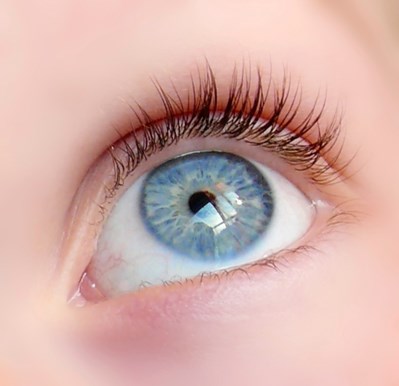Eye health is so much more than simply wearing glasses. ‘Dry eye’ is a common condition that can affect anyone of any age, but is more common as we get older. One of GMHBA’s optometrists Daniel explains what it is, and how symptoms can be managed.
One of the most common forms of eye disease optometrists encounter in clinical practice is dry eye.
Dry eye can result in a variety of symptoms, including intermittent blurring of vision, grittiness and burning, and surprisingly, even watery eyes. In order to fully understand the impact dry eye can have on ocular health and quality of vision, it is important to have a basic understanding of how our how our tears are produced and what they are made of.
Firstly, you can think of our tears being comprised of 3 separate layers. The innermost layer is made of mucous. This is produced by special cells in our conjunctiva and acts like a glue that helps tears bind to the surface of the eye. The middle layer comprises the bulk of our tears. It is made of aqueous which is produced by our lacrimal glands.
 Finally, the outermost layer is made from of thin layer of lipid. This is produced by very tiny oil glands lining our upper and lower eyelid margins. With each blink, our lid margins touch, dragging a thin layer of oil over the surface of the eye. This lipid aids in the spreading of tears over the surface of the eye and helps to prevent evaporation. If any of these layers become compromised, it will undoubtedly lead to dry eye.
Finally, the outermost layer is made from of thin layer of lipid. This is produced by very tiny oil glands lining our upper and lower eyelid margins. With each blink, our lid margins touch, dragging a thin layer of oil over the surface of the eye. This lipid aids in the spreading of tears over the surface of the eye and helps to prevent evaporation. If any of these layers become compromised, it will undoubtedly lead to dry eye.
The role of our tears
Our tears are more than just lubrication. Tears provide the eyes’ natural nourishment and protection against irritants and infection. They also play an integral role in providing optimal optical clarity. With very blink, tears are spread across the surface of the eye, clearing away any debris like a windscreen wiper. This windscreen wiper action also generates a smooth optical surface allowing light to penetrate easily.
If our tear film is poor quality, tears will evaporate more rapidly, resulting in a broken and distorted tear film, and poor vision in between blinks.
Causes of dry eye
Dry eye can result when any one of the three layers making up our tear film becomes compromised. Most commonly, it is the outermost lipid layer that is affected. As we age, oil glands that line our eyelid margin often become blocked and gluggy. This results in a reduced lipid layer, increased tear evaporation and eventually dry eye. Our risk of developing this form of dry eye increases if there is long standing inflammation and infection of the eyelid margin, a condition known as blepharitis.
Common raised ocular surface lesions such as pingueculum and pterygium can also compromise our tear film. These raised lesions disrupt our tear film and prevent a smooth ocular surface. This leads to poor tear film spreading and increased evaporation and dryness. Incomplete blinking and incomplete eyelid closure during sleep are other causes of dry eye. Areas of the eye that do not become covered during lid closure will remain exposed to the surrounding environment and quickly become dry and irritated. Similarly, staring at a hand held electronic devices, TV screens and books for too long can also cause dry eye symptoms.
 Many different environmental factors contribute to development of dry eye. Dry windy weather conditions, dust, heating and air conditioning all have an evaporative effect on our tears. Prolonged exposure to this can dry out our eyes leaving them red, sore, uncomfortable and occasionally blurred.
Many different environmental factors contribute to development of dry eye. Dry windy weather conditions, dust, heating and air conditioning all have an evaporative effect on our tears. Prolonged exposure to this can dry out our eyes leaving them red, sore, uncomfortable and occasionally blurred.
Common symptoms of dry eye
When we blink, friction is generated between the surface of the eye and the inner layer of our eyelids. If our tears are healthy, our eyes will be comfortable and lubricated allowing our eyelids to easily glide over the surface of our eyes. In dry eye, this friction is far greater. So much so, blinking can act like sand paper rubbing over the ocular surface. The end result is damage to the cornea, and a burning, gritty or foreign-body sensation. Transient blurred vision that usually clears with blinking is another common dry eye complication.
Paradoxically, sometimes dry eye can result in very watery eyes. This is due to the body’s natural “reflex tearing”. If our eyes become dry, our body will attempt to rectify the problem by producing excess tears. Due to the dry eye typically resulting from poor tear quality in the first place, this results in a vicious cycle and can lead to severe ocular surface damage if left untreated.
Protecting your eyes from dry eye
The mainstay of dry eye treatment is tear supplementation (aka ocular lubricants). Tear supplements have properties similar to natural tears, and help to reduce dryness and ocular surface irritation. Tear supplements come in various forms such as drops, gels, ointments, and now sprays. Interestingly, recent research indicates that dietary supplementation with omega-3 oils can help to improve tear film quality and help alleviate dry eye symptoms.
Lifestyle issues should be always addressed. Dry eye sufferers should consider avoidance of adverse environmental factors. This may be as simple as redirecting your air-conditioning or heating ducts or vents inside the home or car, or relocating your chair in the office so that you are not in a direct path of dry airflow.
Other treatment options included hot compresses and gentle lid massage. The former involves laying a hot tea towel or face washer over closed eyes. This helps to free up any blocked oil glands and can improve tear film quality. Gentle massage of the lid margin targets these blocked oil glands and helps to mechanically break down any solidified blockages.
In more severe cases of dry eye, punctual plugs can be inserted to prevent drainage of tears down the tear ducts and in very severe cases, we may liaise with your doctor for a trial of systemic medications such as anti-inflammatories and immune suppressants.
Summary
If you feel like you suffer from dry eye, please come in and see one of the friendly optometrists at GMHBA Eye Care. We will assess you for signs of dry eye and help develop a tailored treatment approach for you.



